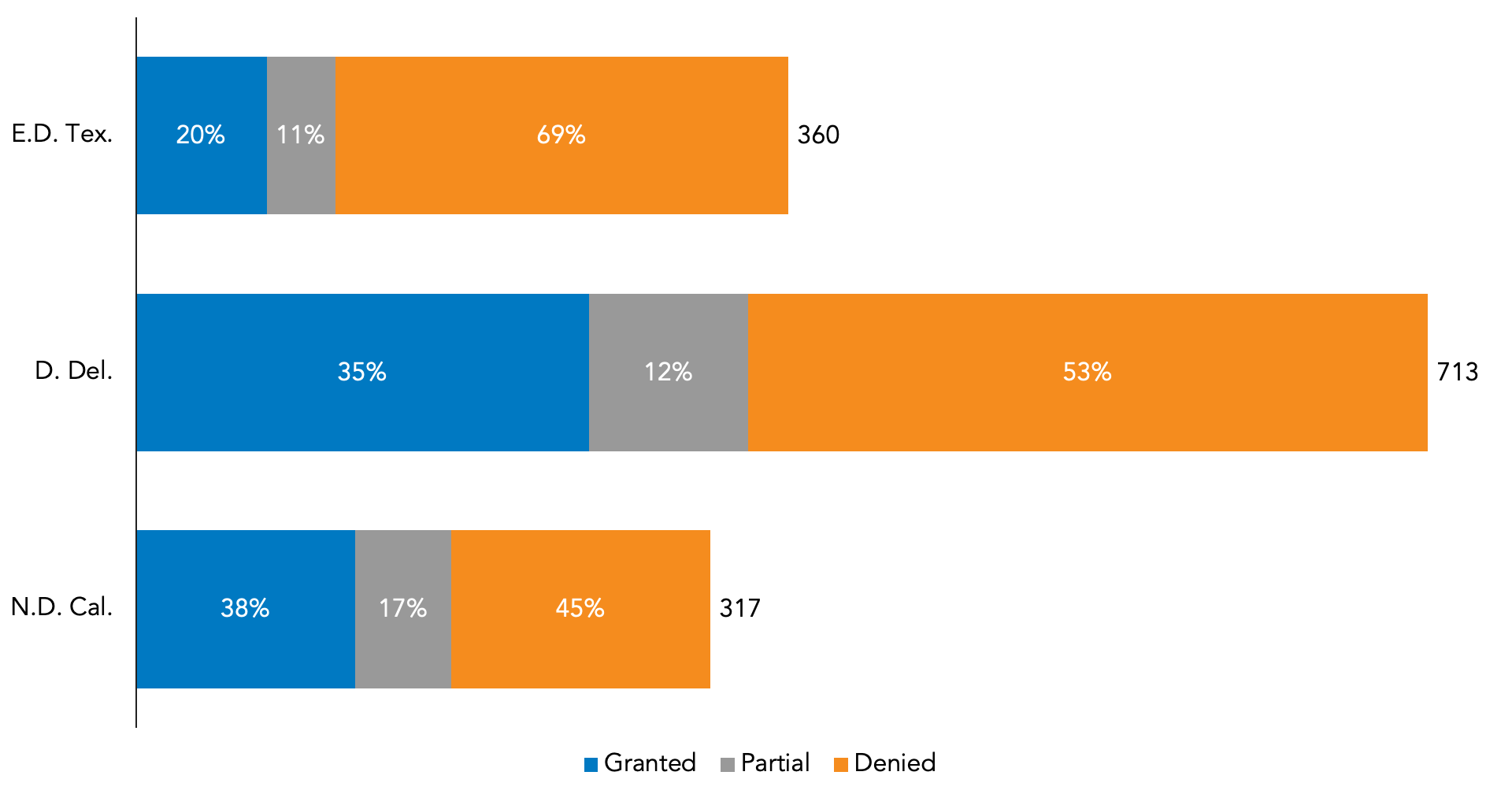Summary Judgment Grant Rates Are Lower in the Eastern District of Texas
July 1, 2020
An RPX analysis of district court summary judgment outcomes reveals that some of the most notable patent venues differ widely in their treatment of such motions. Most significantly, far fewer cases are resolved on summary judgment in the Eastern District of Texas—which has fallen somewhat in popularity this year but remained the number-two venue in 2019—than in other top districts.
As shown below, nearly 70% of the motions for summary judgment filed in the Eastern District of Texas are denied (counting orders filed in 2014-2019). The real-world effective denial rate is likely even higher, as many judges in the district have, at times, restricted litigants’ ability to move for summary judgment by requiring them to first seek permission to file such motions through letter briefing. Indeed, despite having roughly double the number of cases as the District of Delaware in 2014-2019, the Eastern District resolved far fewer motions for summary judgment (regardless of outcome) during that period.
The disparity in grant rates for summary judgment suggests that the Eastern District of Texas is sending cases to the jury that other districts may have resolved pre-trial, often in favor of defendants. The submission of those extra cases would likely increase the number of verdicts favoring defendants.

